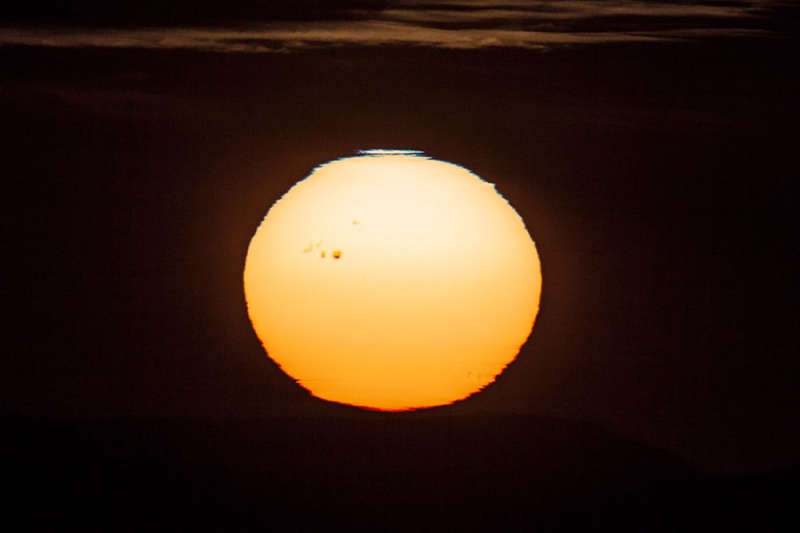
|
Credit & Copyright: Jürg Alean
Explanation:
Sunsets may be the
most watched celestial event,
but lately sunsets have even offered something
extra.
A sunspot so large it was visible to the naked eye is
captured in Swiss skies in this sunset scene from January 5,
crossing left to right near the center of a solar disk
dimmed
and distorted by Earth's dense atomosphere.
Detailed views reveal a large
solar active region composed of sunspots, some
larger than planet Earth itself.
Cataloged as active region AR 1944,
on January 7
it produced a substantial solar flare and a
coronal mass ejection (CME)
forecast to reach Earth.
The CME could trigger
geomagnetic storms and aurora on
January 9.
|
January February March April May June July August September October November December |
| ||||||||||||||||||||||||||||||||||||||||||||||||
NASA Web Site Statements, Warnings, and Disclaimers
NASA Official: Jay Norris. Specific rights apply.
A service of: LHEA at NASA / GSFC
& Michigan Tech. U.
Based on Astronomy Picture
Of the Day
Publications with keywords: Sun - sunspot
Publications with words: Sun - sunspot
See also:
- APOD: 2025 July 30 Á Coronal Loops on the Sun
- APOD: 2025 May 21 Á International Space Station Crosses the Sun
- APOD: 2025 March 16 Á Venus and the Triply Ultraviolet Sun
- APOD: 2024 September 2 Á A Triangular Prominence Hovers Over the Sun
- APOD: 2024 August 18 Á A Solar Prominence Eruption from SDO
- APOD: 2024 August 4 Á Gaia: Here Comes the Sun
- APOD: 2024 July 28 Á Sun Dance
